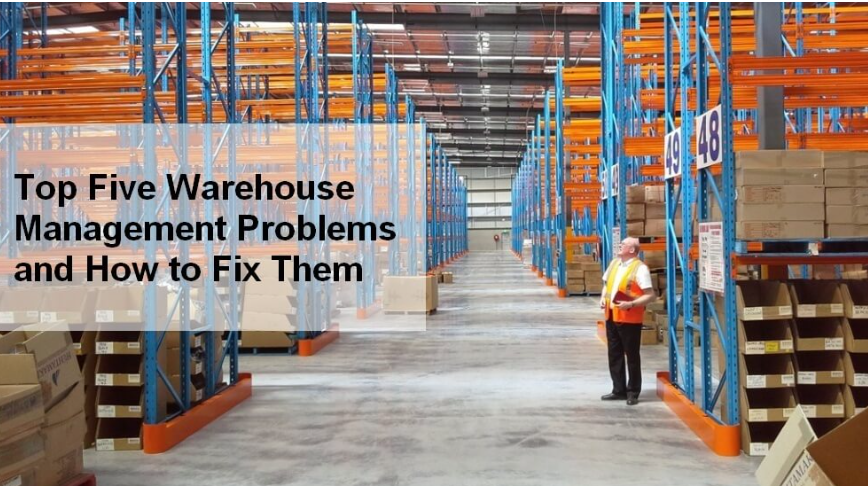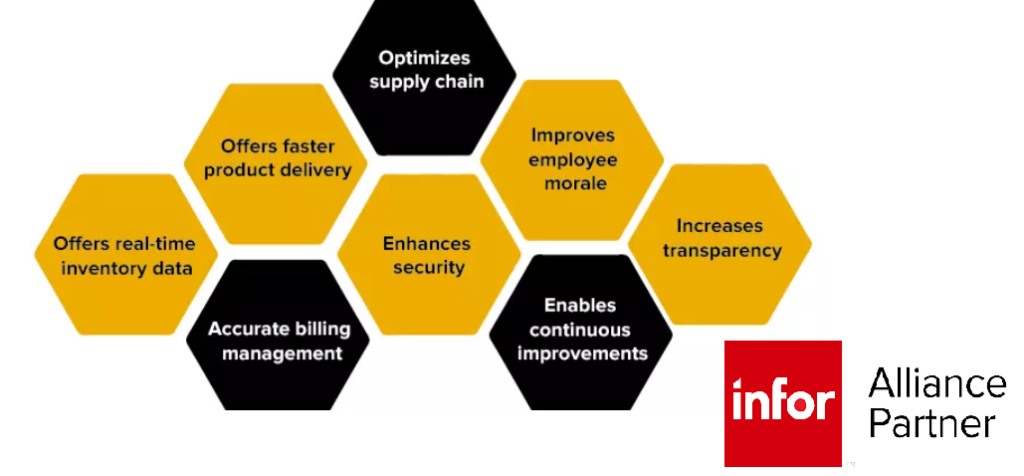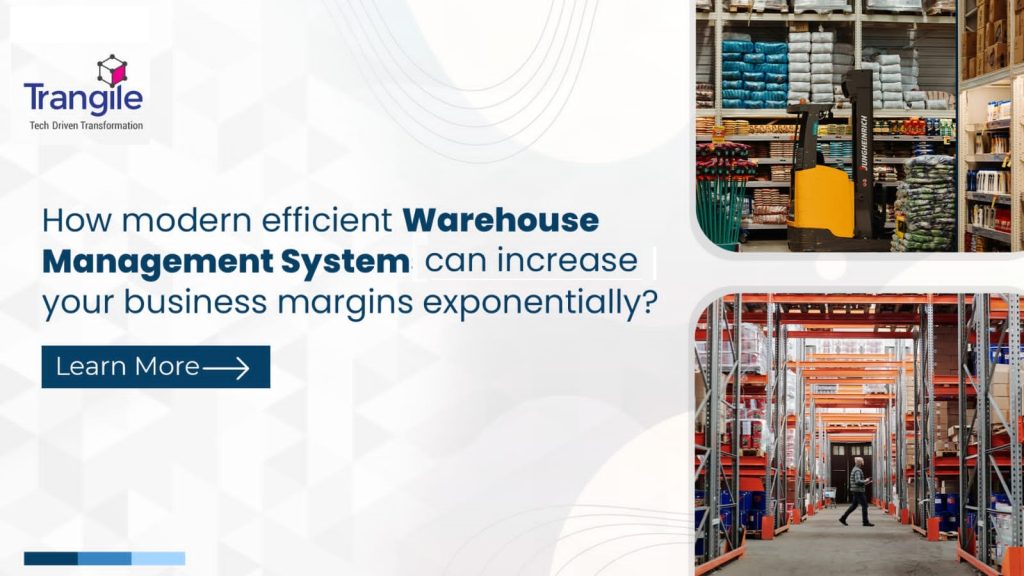The earlier days of warehouse management employed fundamental counting techniques, such as abacuses or pen-and-paper. Even today, you still see warehouse employees counting fingers while collecting stock.
In reality, most corporate inefficiency issues come from the warehouse. Inefficient procedures, time spent searching for lost items, faulty infrastructure, unpleasant surprises, and a mountain of paper shuffling all contribute to a frustrating experience. This all produces issues in the warehouse, and problems in the warehouse entail frequent stocktaking.

A look at the top five warehouse management issues in 2022 and their solutions considering Infor is the focus of this blog:
Inaccurate inventory records
In a world where buyers purchase all the toilet paper in Australia overnight, and South Africa shuts down the alcohol industry, accuracy and efficiency in managing inventory in storage are more important than ever. Overstocking and obsolescence may occur due to inaccuracies in inventory management systems. Inefficient operations are exacerbated when pickers depend on erroneous information. Inaccurate inventory may also have a negative influence on productivity, raise costs, and reduce income.
There are a lot of redundant processes
A product may be handled several times by warehouse workers because of the nature of the warehousing operation. And then Covid struck. The practice of warehouse employees passing the same ticket between their hands, formerly a standard redundant procedure, has now been identified as a health hazard that requires immediate attention.
Inadequate Space Planning in the Warehouse
Efficient utilization of space is a vital success element in warehousing in 2022 because we are attempting to achieve more with less. Inefficient use of available space and insufficient storage capacity are common problems in warehouses with bad facility design. Managers worry greatly about lousy warehouse design because it may negatively influence earnings.
Demands That Are Constantly Changing
Warehouse managers face numerous difficulties as a result of changing consumer demand. Due to the global financial crisis, warehouses had to deal with increasing inventory on certain levels. In contrast, PPE suppliers had to scramble to keep up with the demand of others.
Although this issue has not impacted all sectors equally, it emphasizes the difficulty of controlling swings in demand owing to external influences beyond the warehouse’s control.
Expenses incurred by employees
In a labor-intensive environment, excellent warehouse managers try to boost productivity while minimizing labor expenses, which may account for as much as 65% of operating budgets in most warehouses.
Because of the high equipment cost and massive workforces, warehouse operations face significant difficulty in most cases. Cleaners and packers to managers and administrative employees make up the workforce.
Now warehouses are faced with the challenge of managing a fragile staff while adjusting shifts, ensuring social distance, and accounting for logistical variations.
How do overcome these challenges using advanced Infor WMS as a solution?

To compete in today’s New Fulfillment Economy, there is no place for cumbersome systems, expensive upgrades, or lengthy integrations. The only way to acquire a single, 360-degree picture of your warehouse operations is to improve the fulfillment platform’s efficiency. This also implies a more secure location for data, a faster route to multichannel commerce, and a more intelligent approach to doing business in general.
Changes in consumer behavior disrupted supplier marketplaces, and the rising complexity of supply chains needs a digitally connected solution for fulfillment operations. By moving to the cloud, warehouse management solutions may enable real-time insight, scalability, and market reactivity to satisfy the connected consumer.
Streamlined implementation of the fulfillment process:
To remain competitive in the new fulfillment economy, you must be able to adapt swiftly. You can quickly expand your supply chain using a cloud-based solution. Instead of waiting months for powerful logistical capabilities, they are now accessible in weeks. Infor Warehouse Management Cloud may support complex, multichannel fulfillment operations, which are preconfigured for easy integration with other systems.
With no IT overhead, it provides the same functionality as an on-premises warehouse management system. You’ll save money as a bonus. A cloud-based WMS eliminates the need for software upgrades.
The use of cloud-based technology, make sure you’re always using the latest version of your program:
The SaaS pricing includes regular upgrades, and there are no IT infrastructure or maintenance expenses. Updates allow clients to access the most recent version of the code.
Integrating transportation and logistics might help you save money upfront:
Cloud-based solutions with multitenant capabilities provide a rapid return on investment and a lower total cost of ownership. There’s no need for expensive hardware, software, or IT specialists with the cloud.
To connect all of your logistical tasks, it’s ready to integrate with different other systems. A company with an on-premises WMS may have swiftly paid for several modifications and changes over five years.
Upgrading at this firm will need a thorough reinstall and setup. WMS systems hosted in the cloud do not charge for updates or maintenance. IT infrastructure does not charge for hardware, systems, or database administrators.
Infor professionals set up, operate, and maintain everything in the company’s data centers. To keep your profit margins intact, what was formerly a significant investment is now a predictable and more inexpensive operational expenditure.
Supply chain operational scalability:
Speed is critical in today’s global business. Infor’s cloud-based supply chain solution allows you to scale up your operations to meet changing market conditions quickly. For peak seasons and other changes, you may scale up or down.
You’ll be prepared for any new changes. You don’t have to pay on-premises pricing for this business agility. Investing in internal infrastructure and staff is no longer necessary.
Warehouse management and ERP systems may be seamlessly integrated into one system:
Because it is designed to be integrated, Infor Warehouse Management Cloud Service is an excellent option for businesses. It is possible to integrate the system with the host organization’s ERP, MMS, and supply chain systems (SCM).
Conclusion:
Integration, not isolation, is the goal of Infor WMS . Vendors of material handling equipment may simply use these interface points to develop integrations for automated warehouses.
This cloud-based warehouse management system from Infor (WMS) is the best in the market. To take advantage of cloud computing’s speed and cost benefits, Infor WMS Cloud integrates a robust warehouse management system with a mobile solution that’s simple to use.
Are you ready to take advantage of Infor’s best aspects? Get started with Trangile right now.
We’re here to help. Get in Touch with Us














